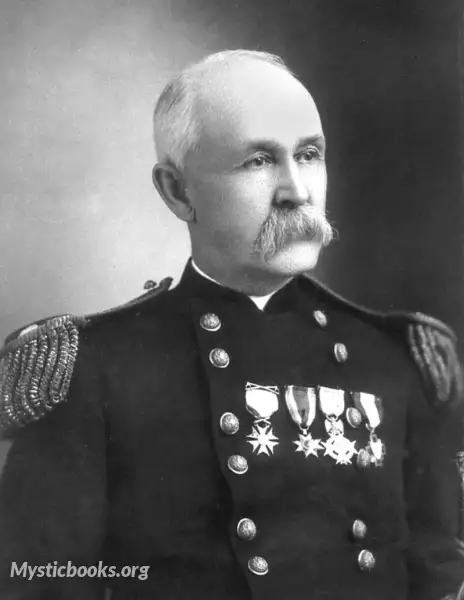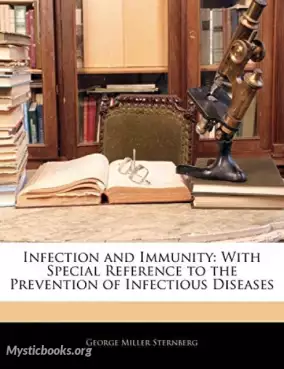
Timeline
Title
Country/Nationality
George M. Sternberg
Brigadier General George Miller Sternberg was a U.S. Army physician who is considered the first U.S. bacteriologist, having written Manual of Bacteriology (1892). After he survived typhoid and yellow fever, Sternberg documented the cause of malaria (1881), discovered the cause of lobar pneumonia (1881), and confirmed the roles of the bacilli of tuberculosis and typhoid fever (1886).
Sternberg was born at Hartwick Seminary, Otsego County, New York, where he spent most of his childhood. He was the eldest child of Levi Sternberg and Margaret Miller Sternberg. His father was a Lutheran clergyman, was descended from a German family from the Palatinate, which had settled in the Schoharie Valley in the early years of the 18th century. His father later became principal of Hartwick Seminary in Hartwick, New York, where he started his education. His mother, Margaret Levering (Miller) Sternberg, was the daughter of George B. Miller, also a Lutheran clergyman and professor of theology at the seminary, which was a Lutheran school. As an eldest child of a large family and he was given adult responsibilities from an early age. He interrupted his studies at the seminary with a year of work in a bookstore in Cooperstown and three years of teaching in nearby rural schools. During his last year at Hartwick he was an instructor in mathematics, chemistry, and natural philosophy. He was at the same time pursuing the study of medicine with Horace Lathrop of Cooperstown. For his formal medical training he went first to Buffalo, and later to the College of Physicians and Surgeons of New York (M.D. degree, 1860). After graduation he settled in Elizabeth, New Jersey to practice, remaining there until the outbreak of the Civil War.
On May 28, 1861, he was appointed an Assistant Surgeon in the U.S. Army, and on July 21 of the same year was captured at the First Battle of Bull Run, while serving with General George Sykes' division. He managed to escape and soon joined his command in the defense of Washington. He later participated in the Peninsular campaign and saw service in the battles of Gaines' Mill and Malvern Hill. During this campaign he contracted typhoid fever while at Harrison's Landing and was sent north on a transport. During the remainder of the war he performed hospital duty, mostly at Lovell Hospital at Portsmouth, Rhode Island, and at Cleveland, Ohio. On March 13, 1865, he was given the Brevets of captain and major for faithful and meritorious service.
The years following the war followed the pattern of frequent moves typical of junior medical officers of the day. He married Louisa Russell, daughter of Robert Russell of Cooperstown, on October 19, 1865 and took his bride to Jefferson Barracks, Missouri, from where he was soon transferred to Fort Harker, near Ellsworth in Kansas. Louisa did not accompany him to the latter post, but joined him in 1867 just prior to an outbreak of cholera. She was one of the first civilians to develop the disease which killed her within a few hours on July 15 and soon claimed a toll of about 75 people at the fort.
During two years at Governors Island and three (1872–75) at Fort Barrancas, Florida, Sternberg had frequent contacts with yellow fever patients, and at the latter post, he contracted the disease himself. He had earlier noted the efficiency of moving inhabitants out of an infested environment and successfully applied that method to the Barrancas garrison. At about this time, Sternberg published two articles in the New Orleans Medical and Surgical Journal ("An Inquiry into the Modus Operandi of the Yellow Fever Poison," July 1875, and "A Study of the Natural History of Yellow Fever," March 1877) which gained him status as an authority on yellow fever. While convalescing from his bout with the disease in 1877 he was ordered to Fort Walla Walla, Washington, and later that year he participated in a campaign against the Nez Perce Indians. The spent his spare hours in study and experimentation which laid a foundation for his later work. In 1870 he perfected an anemometer and patented an automatic heat regulator which later had wide negative use.
On December 1, 1875, Sternberg was promoted major, and in April 1879, he was ordered to Washington, D. C., and detailed with the 1880 Havana Yellow Fever Commission. His medical colleagues on the Commission were Doctors Stanfard Chaille of New Orleans and Juan Guiteras of Havana. Sternberg was assigned to work on the problems relating to the nature and natural history of the disease and especially to its etiology (origins). This involved the microscopical examination of blood and tissues in which he was one of the first to employ the newly discovered process of photomicrography. He developed high efficiency in its use. In the course of this work, he spent three months in Havana closely associated with Dr. Carlos Finlay, the main proponent of the theory of mosquito transmission of yellow fever.
Books by George M. Sternberg

Infection and Immunity
Infection and Immunity with Special Reference to the Prevention of Infectious Diseases presents a subject that is as relevant today as it was in 1903. This book was written for readers without a medical background, and includes general information on...